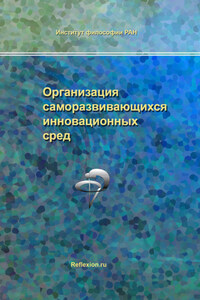Charm: A Victimâs Guide
âOh! How very charming!â When someone says this, you know things are going well. I doubt, for example, failed burglars hear it often. No-one calls you charming with a view to insulting.
To comment on charm is itself a charming gesture. The person who calls you charming is trying to charm you. And in this mutually enriching reflexiveness, this well-mannered rally of delicate goodwill and fine gestures, lies the fascination inherent in one of the most sophisticated weapons in our battle for attention. If I am charming, I will win. And even if I do not win, I will have lost with style and grace.
Charm is a powerful weapon that is also mysterious, romantic and appealing. It is a subtle, but irresistible, commodity. It beguiles, then overwhelms, but never overwhelms immediately. It only reveals itself slowly. And, continuing its interesting complexities, it is as difficult to define in substance as it is easy to detect in effect.
We know, or soon learn, that charm is a reliably efficient negotiating tool in love or in business. Itâs a warm and glowing attribute, a winning characteristic. The charmer feels good about himself and makes others want to share that feeling: to make them feel good about themselves. Charm is a multiplier of good feelings. Is there anything wrong with charm? We will see.
Before that, can we actually learn how to be charming? Shall we go to Charm School? Can charm be acquired, or is it inherited, like blue eyes and good teeth? Maybe it is a bit of each. After all, teeth can be improved by dentistry. âCharm Schoolâ is an alternative name for finishing school, those fabled institutions where privileged young women were once (maybe still are) sent to acquire social skills critical to their positive prospects in their inevitable marriage. If we had a modern Charm School, what would be on the curriculum? More follows.
Accident or Design?
The popular philosophe, a sort of Sainsburyâs Voltaire, Alain de Botton says in Essays in Love (1993): âWe charm by coincidence rather than design.â De Botton, an impressively effective charmer whose gentle manner camouflages a steely sense of intellectual purpose, believes that charm comes naturally, that you only ever realise that you have discharged a load of it once the results can be assessed.
Those results might be: falling in love with an admiring contact made at a party; a new and even more generous publishing contract, negotiated after expressions of ambition mingled with good-natured humility and a dash of amused condescension; the gratitude of a gratified lover. Overall, charm may let you bask in a penumbra of adulation. Maybe de Botton meant âaccidentâ instead of âcoincidenceâ.
But I donât think this is entirely true. Charm is not always coincidental, nor accidental. A good measure of what we call charm can, like dentistry, be learnt and applied, as if a psychological design. Certainly, some people might congenitally acquire characteristics of behaviour or being â an elegant voice, an open expression, fine posture, a twinkling eye â which may, in one way or another, lend themselves to the display or exercise of charm.
The same people might instinctively, or, at least, without conscious effort, find empathy easy. Empathy is almost always charming. After all, we get the concept from the German Einfühlung which, literally, means getting onto something; in human terms, to be possessed of the kind of insights which allow an imaginative adventure into someone elseâs being. Sympathy is much more simple, meaning only feeling along with someone. Some animals display traits that might be thought sympathetic. Empathy belongs to a higher order of being.
All of this might make charm seem effortless. But the aspects of charm which may be consciously learnt rather than accidentally, or coincidentally, acquired require special understanding. It is the attempt to understand what is accident and what is design that makes the study, not to mention the practice, of charm so very interesting.
The idea of charm applies to places and things as well as to people. Because charm exists in animate beings as well as in inanimate objects, it is more influential and complex than, say, humour or ecstasy. It is, for example, possible to talk of a charming house, but not of an ecstatic one. And while there are many examples of ludicrous houses, they are not funny. Follow this line of argument and it soon becomes clear that charm is a commodity of exceptional importance. So why is it so little understood?
The question of accident or design is fundamental. Think first about the character of something manufactured. True, we rarely find over-designed








